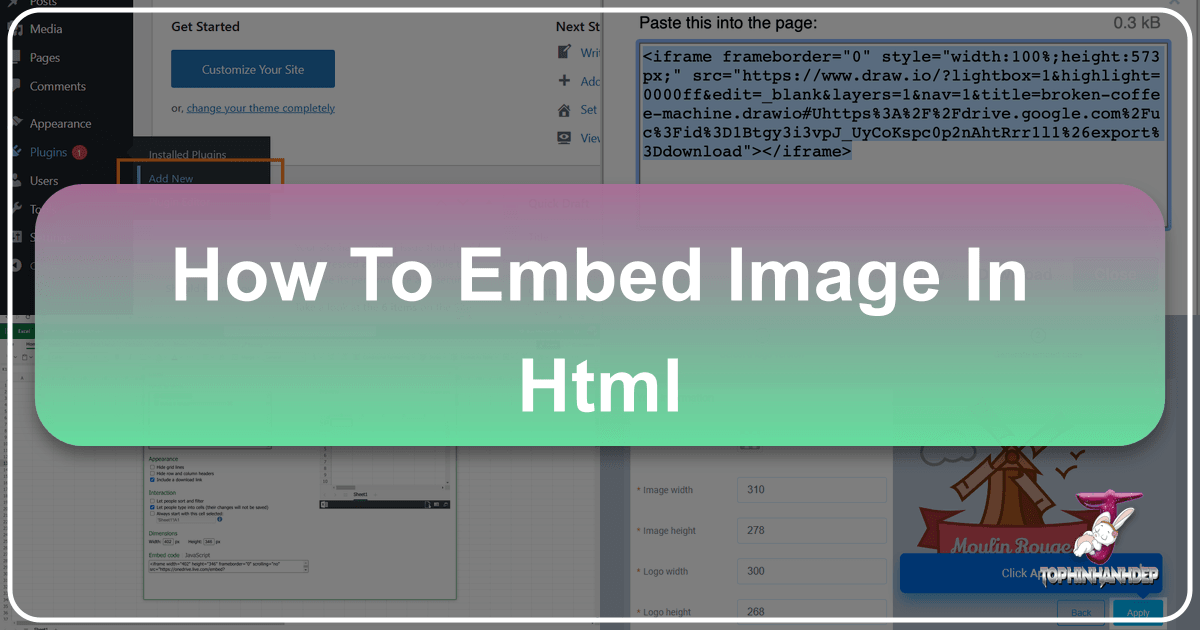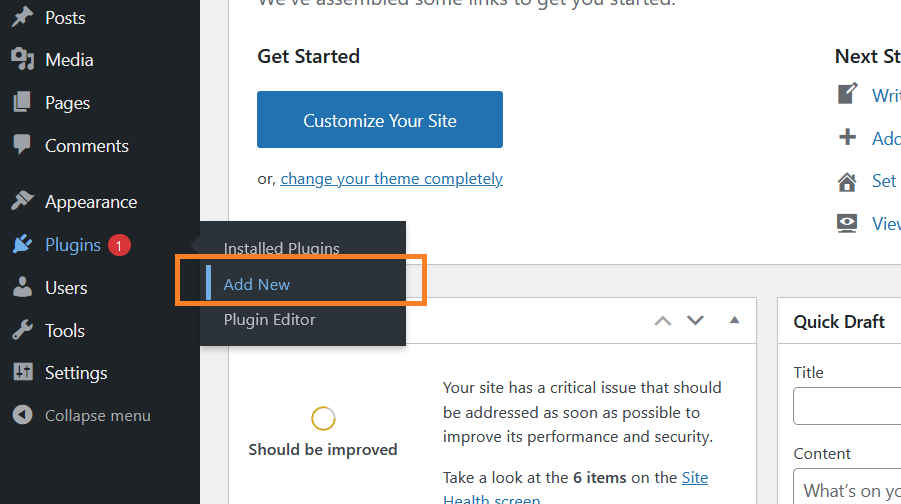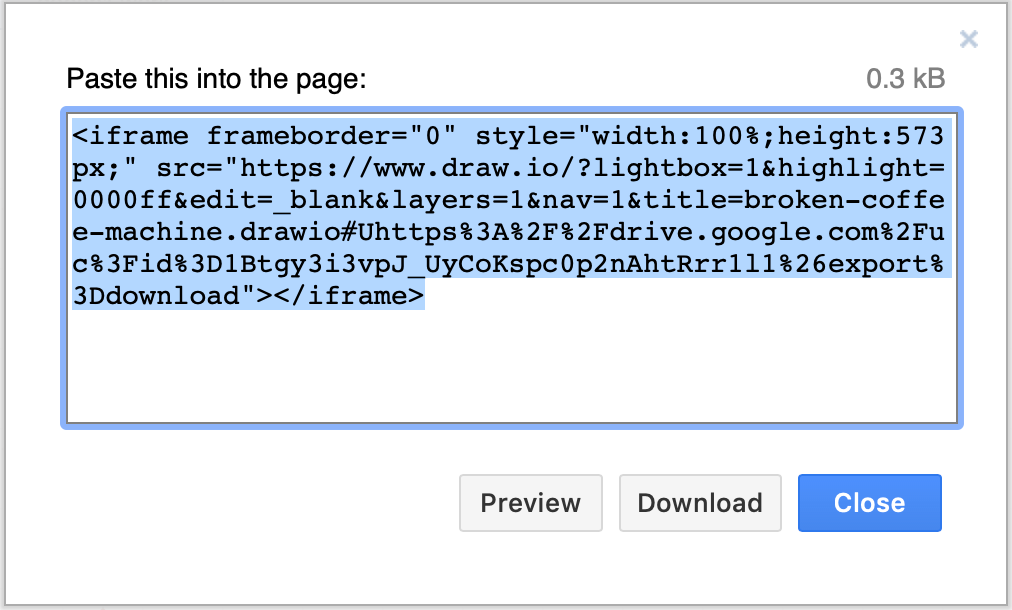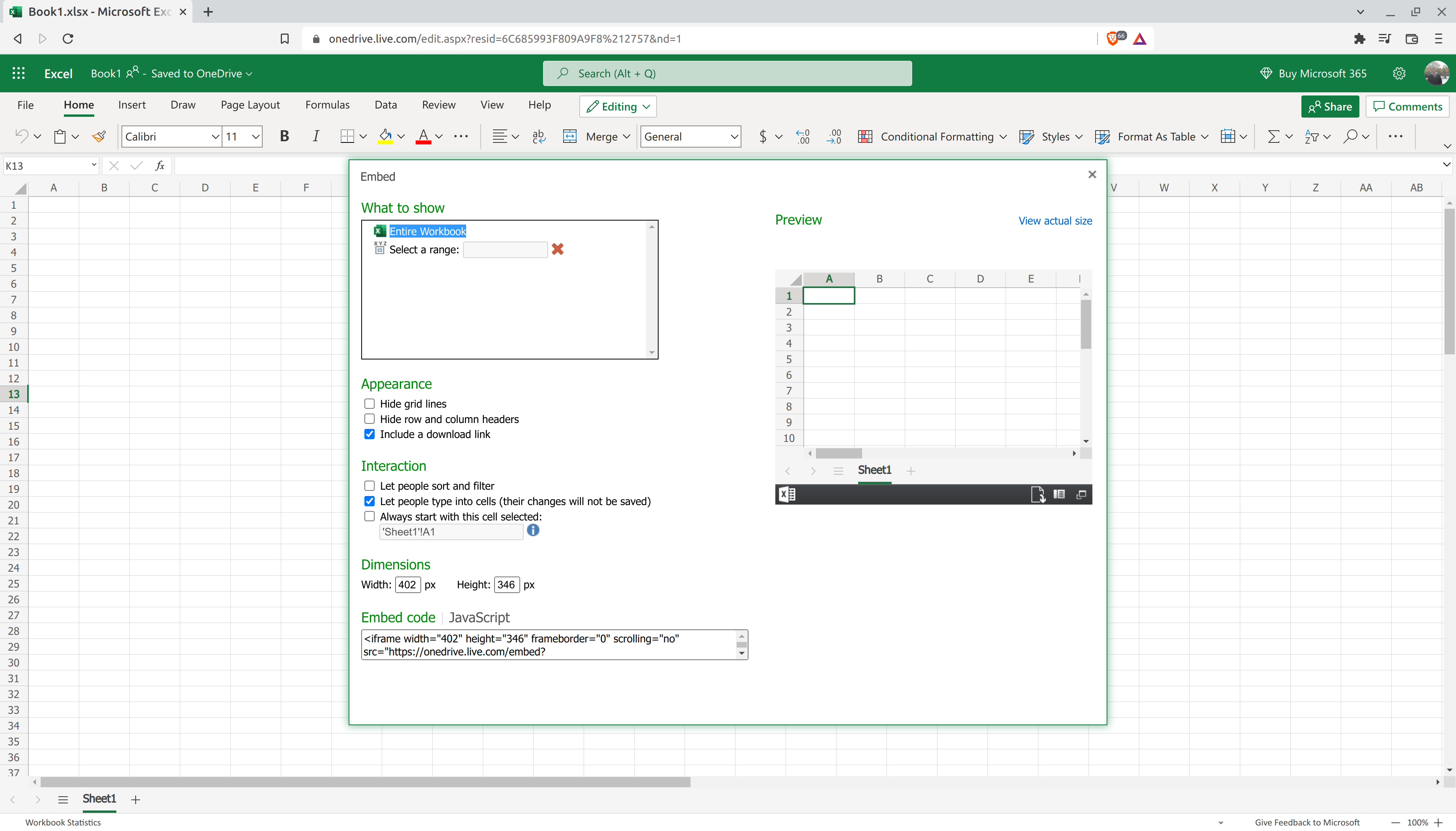Mastering Media Integration: How to Embed Images and Other Content in HTML for Tophinhanhdep.com

In today’s visually-driven digital landscape, the ability to seamlessly integrate diverse media into web pages is paramount. For a platform like Tophinhanhdep.com, dedicated to captivating visuals ranging from stunning wallpapers and aesthetic backgrounds to high-resolution photography and abstract digital art, mastering HTML embedding techniques is not just a technical skill—it’s an art form. It ensures that every carefully curated image, every insightful video, and every interactive element loads efficiently, looks impeccable across all devices, and contributes to an immersive user experience. This comprehensive guide will delve into the various methods for embedding content in HTML, with a particular focus on images, and how these techniques can elevate the presentation of Tophinhanhdep.com’s rich visual offerings.

The primary goal of Tophinhanhdep.com is to inspire and engage its audience through visual excellence. This means delivering not only beautiful photography and creative ideas but also ensuring that the technical implementation supports this aesthetic. From showcasing trending styles and thematic collections to providing essential image tools like converters and optimizers, every aspect of the site relies on robust content embedding. We’ll explore the foundational <img> tag, the versatile <embed> tag, and its powerful counterparts, <object> and <iframe>, demonstrating how each plays a crucial role in bringing Tophinhanhdep.com’s vision to life.
The Core of Visual Web: Embedding Images with the <img> Tag
When it comes to displaying static images—the very heartbeat of Tophinhanhdep.com—the <img> tag is the fundamental and most semantically appropriate HTML element. Unlike some other embedding tags that act as containers for external applications or plugins, the <img> tag is specifically designed to display image files directly. It’s an empty tag, meaning it doesn’t have a closing tag, and its power lies in its attributes.

The most critical attribute is src (source), which points to the URL of the image file. Without a valid src, the browser won’t know which image to display. For instance, if Tophinhanhdep.com wants to feature a breathtaking nature wallpaper, the code might look like this:
<img src="images/nature-wallpaper-forest.jpg" alt="Lush green forest with sunlight filtering through trees" width="800" height="600">Another indispensable attribute is alt (alternative text). This provides a textual description of the image for users who cannot see it (e.g., visually impaired users using screen readers) or when the image fails to load. For Tophinhanhdep.com, accurate and descriptive alt text is crucial for accessibility and search engine optimization, allowing search engines to better understand the content of images like “abstract art backgrounds” or “sad emotional photography.”
Beyond src and alt, width and height attributes are used to define the image’s dimensions. While CSS is generally preferred for styling and responsive design, these attributes can provide initial sizing hints to the browser, helping to prevent layout shifts.

Leveraging Image Tools for Performance and Quality
The sheer volume of high-resolution images, stock photos, and digital photography on Tophinhanhdep.com necessitates a strong focus on performance. Embedding stunning visuals is only effective if they load quickly and efficiently. This is where Tophinhanhdep.com’s suite of image tools becomes invaluable.
Before any image, be it a captivating wallpaper or a detailed abstract piece, is embedded, it undergoes a rigorous optimization process:
- Compression: Images are often large in file size, especially high-resolution ones. Tools that compress images reduce their file size without significantly compromising visual quality. This ensures faster page load times, a critical factor for user retention and SEO.
- Optimization: Beyond simple compression, optimization involves selecting the right file format (JPEG for photographs, PNG for images with transparency, WebP for modern efficiency), lazy loading techniques, and responsive image syntax (
srcset,<picture>) to serve appropriately sized images based on the user’s device and viewport. - AI Upscalers: For older images or those provided at lower resolutions, AI upscalers can intelligently enhance their resolution and detail, transforming them into high-quality visuals suitable for Tophinhanhdep.com’s discerning audience. This ensures that even classic “beautiful photography” can meet modern display standards.
By diligently using these image tools, Tophinhanhdep.com ensures that every embedded image, regardless of its original source or type (from nature photography to digital art), contributes positively to the website’s performance and overall visual appeal, embodying the principles of “Digital Photography” and “Editing Styles” that prioritize quality and impact.
Crafting Visual Narratives: Aesthetic and Thematic Image Embedding
The strategic placement and presentation of embedded images are central to Tophinhanhdep.com’s mission of providing “Image Inspiration & Collections.” It’s not just about displaying images; it’s about telling a story, setting a mood, and guiding the user through a curated visual experience.
When embedding images for categories like “Aesthetic,” “Nature,” or “Sad/Emotional” themes, the choice of image, its surrounding context, and its dimensions all contribute to the narrative. For instance, a collection of “Abstract Wallpapers” might benefit from a grid layout of uniformly sized images, each embedded with specific width and height (or defined by CSS) to create a cohesive mosaic. Conversely, a feature on “Beautiful Photography” might use larger, full-width images to emphasize detail and immerse the viewer.
Tophinhanhdep.com leverages embedding to showcase:
- Mood Boards: Groups of images are embedded together to evoke specific feelings or artistic styles, offering “Photo Ideas” and “Creative Ideas.”
- Thematic Collections: Images related to a particular theme (e.g., “Forest Backgrounds,” “Cityscapes at Night”) are carefully arranged and embedded to form coherent galleries.
- Trending Styles: The site dynamically embeds images reflecting current visual trends, keeping the content fresh and relevant.
The effective embedding of images thus transcends mere technical implementation; it becomes an act of visual curation, where each <img> tag is a brushstroke in the larger masterpiece of Tophinhanhdep.com’s aesthetic.
Beyond Static Images: Exploring the <embed> Tag for Dynamic Content
While the <img> tag is perfect for static images, the HTML <embed> tag steps in when you need to integrate broader external content that might require a plugin or an external application to render. Introduced in HTML5, the <embed> tag provides a container for an external resource, which can be anything from a multimedia file (like video or audio) to an interactive application or even another HTML document. This tag is unique in that it’s a self-closing element, much like <img>, relying entirely on its attributes to function.
The core functionality of <embed> is to specify a src (source) attribute pointing to the URL of the external file and a type attribute indicating the media type of the embedded content (e.g., video/mp4, audio/mpeg, application/pdf). Like <img>, it also commonly uses width and height to define the dimensions of the embedded content.
For Tophinhanhdep.com, while <img> handles the majority of static image displays, <embed> can open doors for more dynamic visual design and interactive content, though modern HTML5 elements like <video> and <audio> are often preferred for multimedia due to better control and accessibility. However, understanding <embed> is crucial for comprehensive media integration.
Embedding Diverse Media with <embed>
The versatility of the <embed> tag allows for the inclusion of various content types, which can enrich Tophinhanhdep.com’s offerings beyond simple images.
-
GIFs: While GIFs can be embedded using the
<img>tag,<embed>also offers a way, particularly if the GIF is considered more of a ‘plugin-like’ animation or if you’re trying to integrate older content that previously relied on plugin-based animations.<embed src="https://www.Tophinhanhdep.com/content/girl-dance.gif" width="200px" type="image/gif"></embed>This example, from an older reference, shows how a GIF can be treated as an embedded file. Modern practice would lean towards
<img>for simple GIFs, but this illustrates the flexibility. -
Videos: Before the dedicated
<video>tag in HTML5,<embed>was a common way to include video players (often Flash-based). While<video>is now the recommended standard,<embed>can still be used.<embed type="video/webm" src="https://www.Tophinhanhdep.com/content/animals.mp4" width="400px" height="300px"></embed>This approach integrates a video directly. For Tophinhanhdep.com, this could be useful for short clips showcasing the making of “digital art” or “photo manipulation” processes, providing a dynamic complement to the static images.
-
Audio: Similarly, for embedding audio files, the
<audio>tag is the contemporary choice. However,<embed>can also serve this purpose, particularly for simpler implementations or specific plugin requirements.<embed type="audio/mp3" src="https://www.Tophinhanhdep.com/content/Nand-Gher-Anand-Bhayo.mp3"></embed>Integrating background audio or sound effects could enhance thematic collections on Tophinhanhdep.com, perhaps complementing a “nature” wallpaper collection with ambient forest sounds.
-
External Web Pages: Perhaps one of the more powerful, yet caution-inducing, uses of
<embed>is to include an entire external web page. This effectively embeds another website or HTML document within your current page.<embed src="https://www.Tophinhanhdep.com/about-us.html" width="100%" height="500px" style="border: 1px solid;"></embed>While tempting, embedding external pages can have security implications and might dilute your site’s branding. It’s generally more common to use
<iframe>for this purpose, which offers better control and security features like thesandboxattribute. However, for internal components or specific legacy applications,<embed>might still be seen.
The Nuances and Browser Compatibility of <embed>
The history of the <embed> tag is intertwined with the evolution of web standards and multimedia plugins. Historically, it was widely used to embed content that required browser plugins (like Adobe Flash Player for interactive content or Microsoft Silverlight for rich media). With the decline of these plugins and the rise of native HTML5 multimedia elements, the role of <embed> has shifted.
HTML5 Introduction: The tag’s official inclusion in HTML5 marked a standardization of a previously non-standard, but widely supported, element. This standardization, however, came alongside the introduction of the <video> and <audio> tags, which are generally preferred for their respective media types due to:
- Native Controls: Built-in playback controls are easily customizable.
- Accessibility Features: Better support for captions, transcripts, and screen readers.
- Performance Optimization: Browsers can optimize loading and playback more effectively.
- Semantic Meaning: Clearly indicates the type of content it holds.
Browser Compatibility: While <embed> is broadly supported across modern browsers (Chrome, Firefox, Safari, Edge), its behavior can sometimes be inconsistent, particularly with unusual file types or older plugin requirements. The Stack Overflow discussion highlighted this, where a user struggled to query content within an <embed> tag, suggesting the limitations of accessing its rendered content via JavaScript, especially if it’s cross-origin. The consensus from expert developers often steers towards <iframe> or the specific <video> and <audio> tags when possible.
For Tophinhanhdep.com, this implies a strategic choice: use <img> for static images, <iframe> for embedded documents or third-party content (like YouTube videos), and <video>/<audio> for native multimedia playback. <embed> remains a tool, but often a fallback or for specific, less common plugin scenarios.
Alternative Embedding Techniques: <object> and <iframe>
While <img> and <embed> serve distinct purposes, the HTML ecosystem offers even more robust and versatile tags for embedding external content: <object> and <iframe>. Understanding these alternatives is crucial for Tophinhanhdep.com to select the most appropriate method for different types of “visual design” and “creative ideas,” ensuring maximum compatibility, control, and user experience.
The <object> Tag
The <object> tag is a highly flexible, general-purpose tag designed to embed various types of external resources, making it a powerful alternative to <embed> in many scenarios. It can handle everything from images, audio, and video to PDF documents, Flash animations, and even other HTML pages. Its primary advantage over <embed> is its ability to provide fallback content, meaning you can specify alternative content to be displayed if the browser cannot render the primary embedded object.
Syntax and Attributes:
The core attributes of <object> are:
data: Specifies the URL of the resource to be embedded.type: Defines the media type (MIME type) of the resource.widthandheight: Specify the dimensions of the embedded object.
Here’s an example of embedding a PDF document, a common use case where Tophinhanhdep.com might share detailed guides on “Digital Photography” techniques or “Image Tools”:
<object data="https://www.Tophinhanhdep.com/guides/photo-editing-guide.pdf" type="application/pdf" width="800" height="600">
<p>Your browser does not support PDFs. <a href="https://www.Tophinhanhdep.com/guides/photo-editing-guide.pdf">Download the PDF</a> to view it.</p>
</object>In this example, if the browser cannot display the PDF, the user will see a paragraph with a link to download the file directly, greatly enhancing accessibility compared to a blank space. The flexibility of <object> makes it a strong contender for embedding content that might not have widespread native browser support or for which fallback options are critical.
The <iframe> Tag
The <iframe> (inline frame) tag is specifically designed to embed another HTML document within the current HTML document. It essentially creates a self-contained browsing context that operates independently from the parent document. This makes <iframe> incredibly useful for integrating content from different sources, such as YouTube videos, Google Maps, or, pertinent to Tophinhanhdep.com, collections of external “Image Inspiration & Collections” from partner sites or showcasing “Photo Ideas” from a user-generated content platform.
Syntax and Attributes:
src: Specifies the URL of the document to embed.widthandheight: Define the dimensions of the iframe.title: Provides a descriptive title for accessibility (crucial for screen readers).allow: Specifies a security policy for features used by the embedded content (e.g.,accelerometer,autoplay,clipboard-write,encrypted-media,gyroscope,picture-in-picture,web-share).sandbox: Enables an extra layer of security by restricting content within the iframe, preventing it from executing scripts, submitting forms, or accessing storage.
Embedding a YouTube video showcasing “Photo Manipulation” techniques would typically use an <iframe>:
<iframe src="https://www.youtube.com/embed/exampleVideoId" width="560" height="315" title="Photo Manipulation Tutorial" frameborder="0" allow="accelerometer; autoplay; clipboard-write; encrypted-media; gyroscope; picture-in-picture; web-share" allowfullscreen></iframe>Comparison with <embed>:
While both <embed> and <iframe> can embed external web pages, <iframe> is generally preferred for this purpose due to:
- Security: The
sandboxattribute provides much finer control over what the embedded content can do, mitigating potential cross-site scripting (XSS) vulnerabilities. - Content Isolation:
<iframe>creates a more distinct browsing context, minimizing interference between the parent page and the embedded content. - Common Usage: Developers are more familiar with
<iframe>for embedding third-party web content, leading to better support and community resources.
Choosing the Right Tool for Tophinhanhdep.com’s Visuals
For Tophinhanhdep.com, the choice of embedding tag depends heavily on the content type and the desired level of interactivity and control:
<img>: Exclusively for static image files (JPEG, PNG, GIF for simple animations). This is the default for “Wallpapers,” “Backgrounds,” and general “Images.”<video>and<audio>(preferred over<embed>): For native HTML5 video and audio files. These offer superior control, accessibility, and performance for demonstrating “Digital Photography” techniques or adding ambient sound to “Nature” collections.<embed>(for specific cases): Can be used for legacy content requiring plugins or for embedding certain non-HTML, non-standard media types that don’t have a dedicated HTML5 tag. However, its use should be minimized in favor of more modern or controlled alternatives.<object>: Excellent for embedding PDFs, SVG files, or other specialized document types where fallback content is essential. Useful for “Image Tools” documentation or “Photography” guides.<iframe>: The go-to for embedding entire external web pages, third-party widgets (like social media feeds), or popular video hosting services (YouTube, Vimeo). Ideal for showcasing “Creative Ideas” from external sources or integrating interactive elements.
By understanding the strengths and limitations of each tag, Tophinhanhdep.com can implement a sophisticated embedding strategy that caters to its diverse content, from high-resolution “Stock Photos” to dynamic “Visual Design” elements, ensuring a rich, secure, and performant user experience.
Enhancing User Experience and Visual Design Through Effective Embedding
The successful integration of media on Tophinhanhdep.com goes far beyond simply dropping an image or video tag into the HTML. It’s about a holistic approach that considers responsiveness, accessibility, and the overarching visual design to create an intuitive and inspiring platform. Each embedded element, whether a beautiful photograph or an interactive tool, must contribute to the seamless flow and aesthetic integrity of the site.
Responsive Design for Embedded Content
In an era dominated by diverse screen sizes, from mobile phones to large desktop monitors, responsive design is non-negotiable. For Tophinhanhdep.com, which thrives on visual impact, ensuring that “Wallpapers,” “Backgrounds,” and “Beautiful Photography” adapt fluidly to any device is paramount.
- Images (
<img>): CSS properties likemax-width: 100%; height: auto;are fundamental for making images scale down gracefully. Modern techniques likesrcsetand<picture>elements allow browsers to serve different image files based on screen size, resolution, and pixel density. This means a user on a smartphone won’t download the massive, high-resolution file intended for a 4K display, significantly improving load times and user experience. This aligns directly with Tophinhanhdep.com’s commitment to delivering “High Resolution” images without sacrificing performance. - Embedded Media (
<video>,<audio>,<iframe>,<object>): Making dynamic content responsive often involves wrapping the element in a container with a specific aspect ratio (e.g., using padding-bottom percentage for a 16:9 ratio) and applyingposition: absolute; width: 100%; height: 100%;to the embedded element itself. This ensures that videos, interactive charts, or embedded PDFs maintain their aspect ratio and scale correctly within their parent container, preventing awkward letterboxing or cropping.
Accessibility Considerations
Accessibility ensures that Tophinhanhdep.com’s rich visual content is available to everyone, including users with disabilities. This is not just a compliance issue; it’s a moral imperative and enhances usability for all.
altAttribute for Images: As previously discussed, thealtattribute for<img>tags is critical. For a “Sad/Emotional” image,alt="A lone figure walking away in the rain, symbolizing sadness"provides context for screen reader users. For “Abstract” art, a descriptivealttext can convey the colors, shapes, and textures.- Captions and Transcripts for Multimedia: For
<video>and<audio>elements, providing<track>elements for captions, subtitles, and audio descriptions (for video) or full transcripts (for audio) makes the content accessible to individuals who are deaf, hard of hearing, or prefer to consume content in text format. This extends the reach of “Digital Photography” tutorials or “Image Tools” demonstrations. titleAttribute for<iframe>and<object>: Thetitleattribute on<iframe>and ``